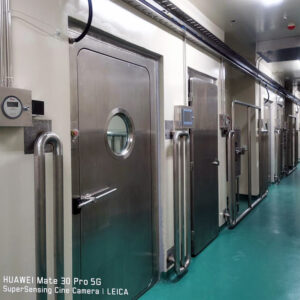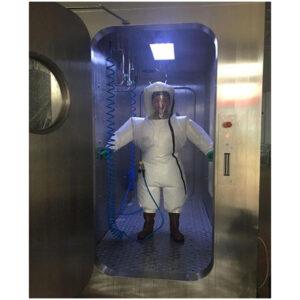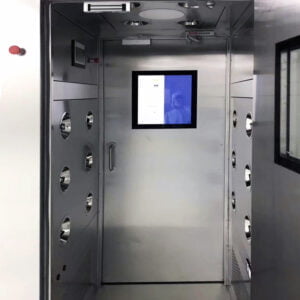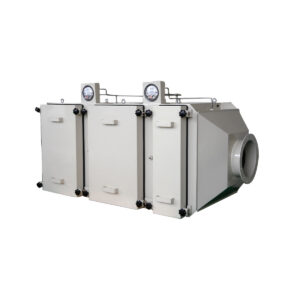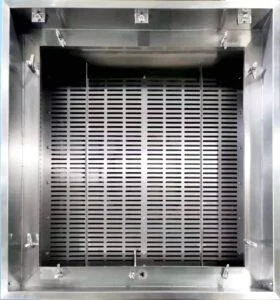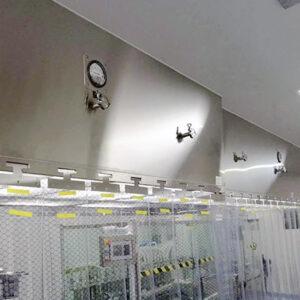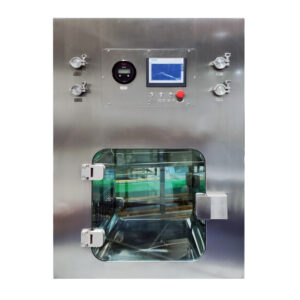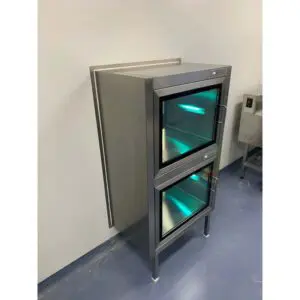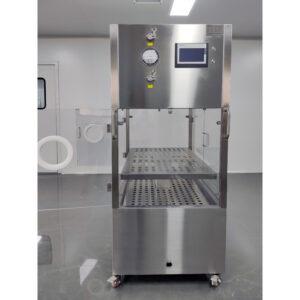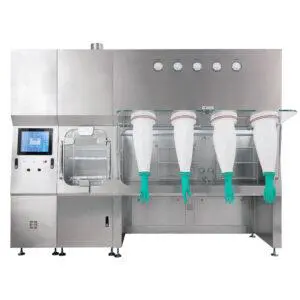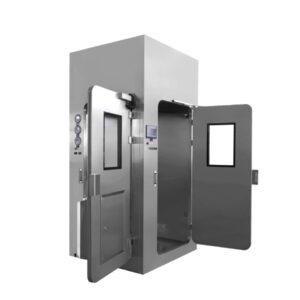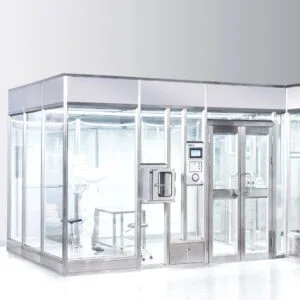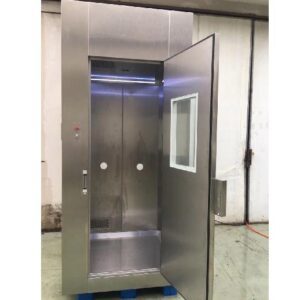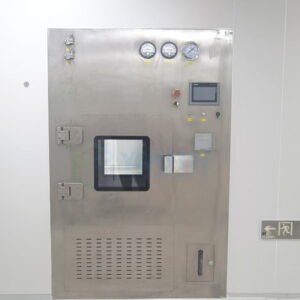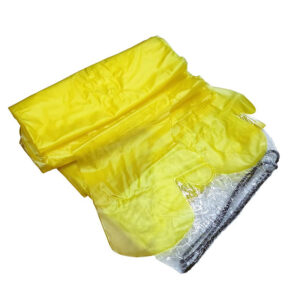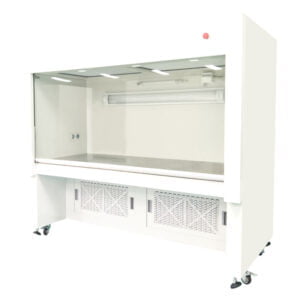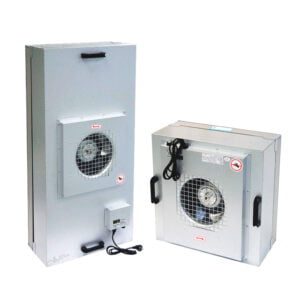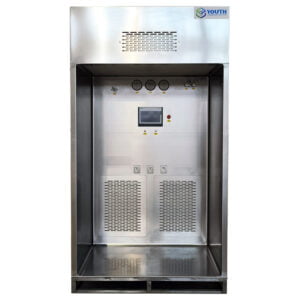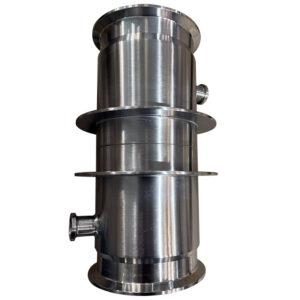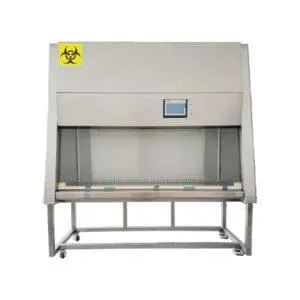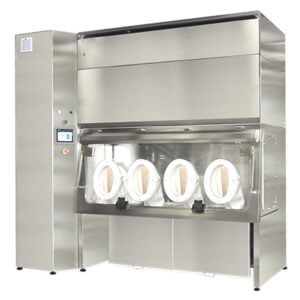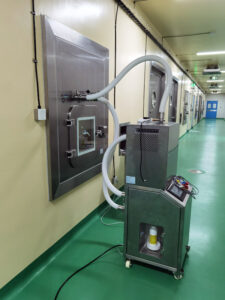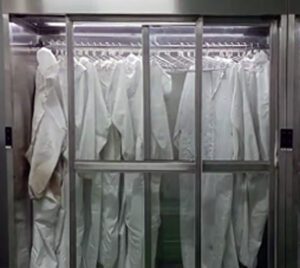When pharmaceutical manufacturers, biotechnology companies, and research facilities face the challenge of handling potent compounds safely, commercial BIBO systems emerge as critical containment solutions. The complexity of balancing worker safety, regulatory compliance, and operational efficiency creates significant pressure on facility managers and safety directors. Without proper containment technology, organizations risk worker exposure, regulatory violations, and costly production shutdowns that can reach millions in losses.
These consequences extend beyond immediate safety concerns. Inadequate containment leads to increased insurance premiums, regulatory scrutiny, and potential litigation. Production delays from contamination incidents can disrupt entire supply chains, affecting patient access to critical medications and damaging company reputation in highly competitive markets.
This comprehensive analysis provides detailed insights into commercial BIBO technology selection, implementation strategies, and proven ROI calculation methodologies. We’ll explore real-world performance data, examine cost-benefit scenarios across different industries, and deliver actionable frameworks for making informed investment decisions that protect both personnel and profitability.
YOUTH Clean Tech has observed significant shifts in how organizations approach containment investments, with data-driven ROI analysis becoming the standard for equipment justification in modern facilities.
What Is Commercial BIBO and Why Does It Matter?
Commercial BIBO (Bag-In-Bag-Out) technology represents the gold standard for high-containment filtration in industrial environments. These systems utilize a sophisticated double-bagging mechanism that allows complete isolation of contaminated filter media during replacement operations, ensuring zero exposure to hazardous materials.
Core Components of Industrial Bag In Bag Out Systems
The fundamental architecture consists of pre-installed outer bags within the filter housing, creating a sealed environment. When filters require replacement, technicians insert clean filters in inner bags, then remove the entire assembly without breaking containment. This process eliminates the traditional exposure risks associated with standard filter changes.
Modern commercial BIBO units integrate advanced sealing mechanisms, pressure monitoring systems, and automated bag deployment features. Housing materials typically include 316L stainless steel with electropolished surfaces, meeting pharmaceutical and biotech industry standards for contamination control.
Critical Applications Across Industries
Pharmaceutical manufacturing facilities utilize these systems for API (Active Pharmaceutical Ingredient) processing, where compounds may exhibit potency levels requiring OEL (Occupational Exposure Limit) protection below 1 μg/m³. Biotechnology laboratories implement BIBO technology for handling genetically modified organisms and cell culture processing operations.
According to industry safety data, facilities implementing proper BIBO containment report 98.7% reduction in measurable operator exposure compared to traditional filtration methods.
Research institutions processing radiopharmaceuticals and cytotoxic compounds depend on commercial BIBO systems to maintain compliance with both OSHA and FDA containment guidelines. The technology proves particularly valuable in applications involving unknown or highly variable toxicity profiles.
How Do Commercial BIBO Units Work in Industrial Settings?
The operational principle centers on maintaining negative pressure differential while providing complete physical isolation of contaminated materials. Commercial BIBO systems create multiple containment barriers through engineered airflow patterns and mechanical sealing mechanisms.
Advanced Filtration and Containment Mechanisms
Primary filtration typically employs HEPA filters rated at 99.97% efficiency for 0.3-micron particles, though many applications require ULPA filtration achieving 99.999% efficiency. The bag-in-bag-out housing maintains continuous negative pressure ranging from -0.5 to -2.0 inches of water column, depending on application requirements.
Commercial BIBO systems incorporate sophisticated pressure monitoring with automated alerts when containment parameters deviate from established ranges. Advanced models include redundant pressure sensors and backup sealing systems for critical applications.
Safe Filter Replacement Protocols
The replacement process begins with verifying proper negative pressure and sealing integrity. Technicians connect the outer bag to a pre-installed containment ring, then insert the new filter assembly within an inner bag. After securing both sealing mechanisms, the contaminated filter remains completely isolated within the double-bag system.
This methodology eliminates traditional decontamination procedures that often involve chemical spraying or extended downtime. Filter changeout operations that previously required 4-6 hours with full PPE now complete within 45-60 minutes using standard protective equipment.
Integration with Existing Process Equipment
Commercial BIBO units integrate seamlessly with powder processing equipment, filling lines, and packaging systems. Connection options include standard flanges, tri-clamp fittings, and custom interfaces designed for specific process requirements.
| Integration Component | Standard Options | Custom Capabilities |
|---|---|---|
| Inlet Connections | 4″-24″ flanges, Tri-clamp | Process-specific geometries |
| Outlet Configurations | Round, rectangular ducts | Multiple outlet manifolds |
| Monitoring Systems | Pressure differential | Flow rate, particle counting |
| Control Integration | 4-20mA signals | PLC communication protocols |
What Are the Key Benefits of Industrial Bag In Bag Out Technology?
The primary advantage lies in eliminating measurable operator exposure during maintenance operations. Traditional filter systems create exposure spikes during replacement procedures, even with extensive PPE protocols. Industrial bag in bag out technology maintains containment integrity throughout the entire service cycle.
Enhanced Worker Safety and Regulatory Compliance
Quantified safety improvements include reducing filter change exposure from typical levels of 10-50 μg/m³ to undetectable levels below analytical limits. This performance enables facilities to handle compounds with increasingly stringent OEL requirements without compromising operational efficiency.
Regulatory compliance benefits extend beyond exposure reduction. FDA inspections consistently note BIBO implementation as evidence of comprehensive contamination control programs. The technology demonstrates commitment to ALARA (As Low As Reasonably Achievable) principles that regulators expect in modern pharmaceutical facilities.
Operational Efficiency and Cost Reduction
Maintenance time reductions translate directly to increased production capacity. Facilities report 60-75% reduction in filter change duration when implementing commercial BIBO systems compared to traditional containment methods.
Industry analysis indicates that facilities processing high-potency compounds achieve payback periods of 18-24 months through reduced downtime, eliminated decontamination costs, and decreased PPE requirements.
Process Flexibility and Scalability
Modern commercial BIBO units accommodate varying production schedules and product changes without extensive reconfiguration. Modular designs allow capacity expansion through parallel installation, supporting facility growth without major infrastructure modifications.
The technology adapts to different compound characteristics through filter media selection and airflow optimization. Single installations serve multiple product lines while maintaining cross-contamination prevention between campaigns.
How to Calculate BIBO Investment Costs and ROI?
Understanding the complete financial impact requires analyzing both direct equipment costs and operational benefits across the system lifecycle. BIBO investment calculator methodologies must account for initial capital, installation expenses, ongoing maintenance, and quantified operational improvements.
Comprehensive Cost Analysis Framework
Initial equipment costs for commercial BIBO units typically range from $25,000 to $150,000 depending on size, materials, and automation features. Installation expenses add 15-25% to equipment costs, including electrical connections, ductwork modifications, and commissioning activities.
Annual operational costs include replacement filters ($2,000-$8,000), routine maintenance ($1,500-$4,000), and calibration services ($800-$2,000). These figures vary significantly based on process conditions, filtration requirements, and maintenance protocols.
Quantifying Operational Benefits
Direct cost savings emerge from reduced maintenance labor, eliminated decontamination chemicals, and decreased PPE consumption. Facilities typically save $15,000-$30,000 annually in maintenance labor alone through faster filter replacement procedures.
Production efficiency improvements provide substantial value through increased manufacturing capacity. Each avoided hour of downtime represents $5,000-$25,000 in recovered production value for typical pharmaceutical manufacturing operations.
| Cost Category | Traditional Systems | Commercial BIBO | Annual Savings |
|---|---|---|---|
| Maintenance Labor | $45,000 | $18,000 | $27,000 |
| Decontamination | $12,000 | $0 | $12,000 |
| PPE Costs | $8,000 | $3,000 | $5,000 |
| Downtime Impact | $125,000 | $35,000 | $90,000 |
Risk Mitigation Value Assessment
Insurance premium reductions of 10-15% are common when facilities demonstrate advanced containment capabilities. Regulatory compliance benefits include reduced inspection findings and faster approval processes for new product introductions.
The value of avoiding exposure incidents extends far beyond immediate costs. Single exposure events can result in $500,000-$2,000,000 in investigations, remediation, and legal expenses, making prevention economics extremely favorable.
What Factors Impact Commercial BIBO ROI Calculations?
Multiple variables influence the financial performance of BIBO ROI calculator analyses, requiring careful consideration of facility-specific conditions and operational patterns. Understanding these factors enables more accurate projections and optimal system selection.
Process-Specific Variables
Compound toxicity levels directly impact ROI calculations through varying exposure control requirements. Facilities handling OEL compounds below 10 μg/m³ realize greater benefits from BIBO technology compared to less potent materials processing operations.
Production volume affects system utilization and corresponding benefits. High-volume operations with frequent filter changes maximize the operational efficiency advantages of commercial BIBO systems.
Experience indicates that facilities processing more than 500 kg annually of high-potency compounds achieve optimal ROI from commercial BIBO investments, with payback periods typically under 2 years.
Facility Configuration Impact
Existing ventilation infrastructure influences installation costs and integration complexity. Facilities with adequate exhaust capacity and appropriate electrical services minimize implementation expenses and accelerate ROI achievement.
Space constraints affect system selection and corresponding costs. Compact BIBO designs may carry premium pricing but eliminate costly facility modifications required for larger traditional systems.
Regulatory Environment Considerations
Increasing regulatory scrutiny of containment practices drives additional value from BIBO investments. Facilities in FDA-regulated industries face growing expectations for advanced containment technology implementation.
International operations must consider varying regulatory requirements across different markets. European EMA guidelines and other international standards may necessitate BIBO-level containment for market access.
How to Choose the Right Commercial BIBO Units for Your Facility?
Selecting optimal commercial BIBO technology requires comprehensive analysis of process requirements, facility constraints, and long-term operational goals. The decision framework must balance performance capabilities with economic considerations across the system lifecycle.
Technical Specification Analysis
Airflow requirements typically range from 500 to 5,000 CFM depending on process equipment size and containment needs. Proper sizing ensures adequate capture velocity while minimizing energy consumption and operational costs.
Filter efficiency selection depends on particle size distribution and containment requirements. HEPA filtration suffices for many applications, while submicron particles or regulatory requirements may necessitate ULPA performance specifications.
Integration and Compatibility Assessment
Process equipment compatibility affects installation complexity and operational reliability. BIBO systems must integrate seamlessly with existing powder handling equipment, packaging lines, and material transfer systems.
Facility infrastructure evaluation includes electrical capacity, exhaust systems, and structural support requirements. Inadequate infrastructure can significantly increase implementation costs and delay project completion.
Vendor Selection and Support Capabilities
Supplier experience with similar applications provides valuable insights for system optimization and troubleshooting. Established vendors offer comprehensive support including installation supervision, operator training, and ongoing technical assistance.
Maintenance support availability affects long-term operational costs and system reliability. Local service capabilities reduce response times and minimize production disruptions during maintenance activities.
What Are Common Challenges When Implementing Commercial BIBO Systems?
While commercial BIBO technology offers significant advantages, successful implementation requires addressing potential challenges through careful planning and experienced execution. Understanding these considerations enables proactive mitigation strategies and realistic project expectations.
Space and Installation Constraints
Commercial BIBO systems require adequate clearance for bag installation and maintenance access. Facilities with limited headroom or confined spaces may need specialized designs that increase equipment costs and complexity.
Retrofitting existing facilities often involves ductwork modifications and electrical upgrades that can substantially impact project budgets. Early infrastructure assessment prevents costly surprises during implementation.
Maintenance Complexity and Training Requirements
Operating personnel require comprehensive training on proper bag installation and replacement procedures. Inadequate training leads to containment breaches and safety risks that undermine system benefits.
Maintenance scheduling coordination becomes critical when multiple systems serve connected processes. Poor planning can create production bottlenecks and reduce the operational efficiency gains from BIBO implementation.
Initial Investment and Budget Justification
Higher upfront costs compared to traditional filtration can create internal resistance despite favorable long-term economics. Comprehensive ROI analysis and regulatory compliance benefits help justify the investment to financial stakeholders.
Industry data shows that 78% of facilities implementing commercial BIBO systems report exceeding projected ROI within the first three years, primarily through higher than expected productivity improvements and regulatory compliance benefits.
Budget constraints may force compromises in system specifications or implementation timing that affect overall project success. Phased implementation strategies can help manage cash flow while achieving critical containment objectives.
The future of commercial BIBO technology points toward increased automation, enhanced monitoring capabilities, and integration with Industry 4.0 manufacturing systems. These developments will further improve ROI characteristics while expanding application possibilities across various industries.
Organizations evaluating containment technology investments should consider commercial BIBO systems as comprehensive solutions that deliver measurable safety improvements, regulatory compliance advantages, and substantial operational benefits. The combination of worker protection, efficiency gains, and risk mitigation creates compelling value propositions for facilities handling hazardous materials.
Successful implementation requires careful attention to system selection, proper installation practices, and comprehensive operator training. When executed effectively, commercial BIBO technology provides decades of reliable service while supporting facility growth and evolving regulatory requirements.
For facilities ready to advance their containment capabilities, professional consultation and detailed ROI analysis will ensure optimal system selection and implementation success. The investment in proper containment technology represents both a commitment to worker safety and a strategic decision that supports long-term operational excellence.
What specific containment challenges does your facility face, and how might commercial BIBO technology address your unique requirements while delivering measurable returns on investment?
Frequently Asked Questions
Q: What are Commercial BIBO Units and how do they function?
A: Commercial BIBO Units, which stand for Bag-In Bag-Out systems, are specialized containment housings designed to safely change contaminated filters without exposing workers or the environment to hazardous materials. They use sealed bags to isolate the filters during replacement, ensuring no contamination escapes. These units help maintain clean air quality and protect sensitive operational environments such as pharmaceutical manufacturing, healthcare, and hazardous facilities.
Q: Why is investing in Commercial BIBO Units beneficial for businesses?
A: Investing in Commercial BIBO Units offers several key benefits:
- Enhanced safety by preventing exposure to harmful contaminants.
- Compliance with strict regulatory standards.
- Reduced downtime during filter changes, improving operational efficiency.
- Lower long-term maintenance and health risks.
These advantages help safeguard both personnel and product quality, making it a practical investment for industries requiring stringent contamination control.
Q: How does the Investment & ROI Calculator help with Commercial BIBO Units?
A: The Investment & ROI Calculator for Commercial BIBO Units helps businesses estimate the financial return of installing these systems. It accounts for factors like initial purchase costs, reduced labor and downtime expenses, energy savings, and compliance-related cost avoidance. By quantifying savings and payback periods, it enables companies to make informed decisions and justify expenditures on BIBO technology.
Q: What energy savings can be expected from using Commercial BIBO Units?
A: Commercial BIBO Units often feature intelligent control systems that improve energy efficiency by up to 35% compared to traditional methods. Their durable construction and easy maintenance ensure sustained energy savings—over 95% of initial efficiency can be maintained even after 10 years. This leads to substantial cost reductions and environmental benefits throughout the system’s lifecycle.
Q: What are the critical safety considerations when using Commercial BIBO Units?
A: Key safety considerations include:
- Ensuring proper sealing of bags to prevent contamination leaks.
- Following established procedures for filter removal and disposal.
- Selecting units made from materials suitable for the specific hazardous environment.
- Regular inspection and maintenance to maintain containment integrity.
Adhering to these ensures workers stay protected and regulatory standards are consistently met.
Q: Can Commercial BIBO Units be customized for different industrial applications?
A: Yes, Commercial BIBO Units can be tailored regarding size, material, filter type, and housing design to suit various applications—from pharmaceutical cleanrooms to nuclear and biological facilities. Customization ensures optimal performance tailored to the specific contamination risks and operational requirements of each facility.
External Resources
Return on Investment (ROI) Calculator | Commercial Real Estate Star – A dedicated ROI calculator for commercial property investment, providing cash flow projections, break-even analysis, and step-by-step ROI calculations specific to commercial real estate.
Calculate Your Commercial Property’s ROI | IPA Commercial – In-depth guide to calculating ROI for commercial real estate, including example scenarios and investment vs. return breakdowns for both all-cash and financed purchases.
ROI Calculator | Omni Calculator – A general investment ROI calculator with explanations on analyzing investments, applicable to evaluating returns for equipment or commercial units.
How Do You Calculate ROI for Videos? Includes an Online ROI Calculator | IdeaRocket – Provides an online calculator and detailed instructions for ROI analysis, adaptable for assessing returns on commercial equipment or marketing units.
Investment Property ROI Calculator | Mashvisor – Offers comprehensive calculators and analytics tools for real estate investors to estimate ROI based on purchase price, rent, expenses, and financing structure.
Commercial Investment Property Calculator | PropertyMetrics – A specialized commercial investment calculator that helps users analyze ROI, cash flow, and rate of return for various types of commercial units and investments.
Related Contents:
- Understanding BIBO | Hazardous Material Containment
- Bag In Bag Out Systems | Safety Fundamentals Explained
- Mobile LAF Cart ROI: Investment Calculation Guide
- Safe Chemical Handling with BIBO Systems
- BIBO vs. Traditional Containment: Which is Better?
- How BIBO Works | Containment Filter Technology Guide
- Top 5 BIBO Containment Solutions for 2025
- BIBO System Basics | Bag In Bag Out Filter Principles
- BIBO Filter Housing | Design Principles & Components

